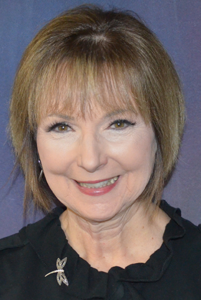The Road Trip
by Lynn Newmyer
Every summer my husband and I look forward to choosing a destination, packing up the car and heading into a wonderful week of both wandering and purpose. We choose to have a plan but allow for the discovery of new places along the way.
Each school year, I challenge myself to learn something new to improve my practice. Much like my summer road trip, I choose an area to explore, gather my resources and ready myself to build on what I know while being open to discovering new things.
During the summer as I was doing some professional reading, I came upon a very intriguing quote. “If you want to truly understand something, try to change it.” (Bryk, Gomez, Grunnow, LeMahieu 2015) I am by no means an expert on the disciplined work put forth in the professional book in my hands, however, I felt that I could study what I wanted to improve and then consider what I could change that might have a positive impact on my students’ learning.
Dr. Mary Lose, our trainer at Oakland University, had been working with the Teacher Leader group on how we could increase teachers’ understandings of what it means for a child to know a word before putting it on the Weekly Writing Vocabulary Chart. I started wondering if what I was recording as known, was really known by my students. The following are reflections of what I learned while working with two of my students.
Clay states that “A child’s writing vocabulary consists of the words he or she knows in every detail and produces easily without help plus any new word he or she can construct correctly using existing strategies and knowledge.” (Clay 2001)
A key understanding is that ‘known’ is not as simple as ‘known’ and ‘not known’. Being more aware in order for a letter or a word to be known, there are two journeys that words and letters may take from new to known with degrees of known and from slow to fast production. (Clay 2001, Clay 2016)
Now it was time to change my practice. What if I paid closer attention at the beginning of the series of lessons for each of my students and noticed not just if they knew a word but how well they knew a word?
I decided to do a writing spree at designated points and notice if words were prompted or unprompted, fast or slow, correct or partially correct.
In addition, I planned to intentionally provide opportunities across the lesson for students to learn how to learn a word.
Discoveries using planned writing sprees were insightful. My students were engaged in the challenge of being able to visibly see what they could write and how many words were coming under their control. More words were written unprompted and were correct or nearly correct. If a prompt was given, the students started generating more of their own words.
Another surprise was the intensity of the students’ concern to get the words just right during the second writing spree.
Each student was beginning to monitor and self-correct their words. They crossed out some of their words and tried again. They were paying close attention to the details of print especially their letter formation and students used what was practiced to self -correct their attempts.
Changes in my learning, deeper understandings, and my teaching caused me to notice the following:
• Increase in known and easily produced words seemed to link to an increase in text level, but not always.
• Teaching for a writing vocabulary consistently resulted in an increased writing vocabulary. Intentionality and persistence was critical.
• Frequent writing sprees seemed to send a message to the students that this was important so more words were learned early on.
• Knowing what each student knew such as quick letter formation or partially known words or word parts contributed to ease of learning new words.
Every journey is an important one as the students I teach and their needs dictate which road trip is next.
Clay reminds us, “Every interaction in the daily writing segment is a teaching move – not a memory task, nor a practice attempt, nor an analysis of sounds, but carefully determined and astutely delivered teaching with a target that involves learning how to do something, do it better, do it faster, link it up to something, and prepare it for future independent use.” (Clay 2001)
References
Bryk, A.S., Gomez, L.M., Grunow, A., LeMahieu (2015) Learning to Improve How America’s Schools Can Get Better at Getting Better, Cambridge, MA: Harvard Press
Clay, M. (2001) Change Over Time in Children’s Literacy Development Portsmouth, NH: Heinemann.
Clay, M. (2016) Literacy Lessons Designed for Individuals Second Edition, The Marie Clay Literacy Trust Portsmouth, NH: Heinemann

Lynn Newmyer is a Reading Recovery teacher leader from Walled Lake, MI.









